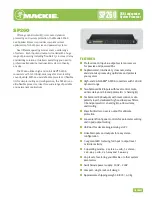
60
Calculation process
The STP algorithm uses the following calculation process:
1.
Network initialization.
Upon initialization of a device, each port generates a BPDU with the following contents:
{
The port as the designated port.
{
The device as the root bridge.
{
0 as the root path cost.
{
The device ID as the designated bridge ID.
2.
Root bridge selection.
Initially, each STP-enabled device on the network assumes itself to be the root bridge, with its
own device ID as the root bridge ID. By exchanging configuration BPDUs, the devices compare
their root bridge IDs to elect the device with the smallest root bridge ID as the root bridge.
3.
Root port and designated ports selection on the non-root bridges.
Step
Description
1
A non-root-bridge device regards the port on which it received the optimum configuration
BPDU as the root port.
describes how the optimum configuration BPDU is
selected.
2
Based on the configuration BPDU and the path cost of the root port, the device calculates
a designated port configuration BPDU for each of the other ports.
•
The root bridge ID is replaced with that of the configuration BPDU of the root port.
•
The root path cost is replaced with that of the configuration BPDU of the root port plus
the path cost of the root port.
•
The designated bridge ID is replaced with the ID of this device.
•
The designated port ID is replaced with the ID of this port.
3
The device compares the calculated configuration BPDU with the configuration BPDU on
the port whose port role will be determined. Then, the device acts depending on the result
of the comparison:
•
If the calculated configuration BPDU is superior, the device performs the following
operations:
{
Considers this port as the designated port.
{
Replaces the configuration BPDU on the port with the calculated configuration
BPDU.
{
Periodically sends the calculated configuration BPDU.
•
If the configuration BPDU on the port is superior, the device blocks this port without
updating its configuration BPDU. The blocked port can receive BPDUs, but cannot
send BPDUs or forward data traffic.
When the network topology is stable, only the root port and designated ports forward user traffic.
Other ports are all in the blocked state to receive BPDUs but not to forward BPDUs or user
traffic.
Table 4 Selecting the optimum configuration BPDU
Step
Actions
1
Upon receiving a configuration BPDU on a port, the device compares the priority of the
received configuration BPDU with that of the configuration BPDU generated by the port.
•
If the former priority is lower, the device discards the received configuration BPDU
and keeps the configuration BPDU the port generated.
•
If the former priority is higher, the device replaces the content of the configuration
BPDU generated by the port with the content of the received configuration BPDU.
2
The device compares the configuration BPDUs of all the ports and chooses the optimum
Summary of Contents for H3C S7500E-X
Page 70: ...57 ...















































